Abstract
The article presents a study on the development of creative abilities of students in the process of studying artistic metal processing. We assume that it is necessary to start developing the creative abilities of students in institutions of additional education and continue until the formation of a professional career. Using two methods – conversation and involvement in play activities – we conducted a diagnosis of abilities. In the institutions of additional education, the process of developing creative abilities through visual, decorative-applied, and technical activities was analyzed. These types of activities are basic in the study of artistic metal processing. The choice of additional education institutions is substantiated and their potential is revealed in terms of the educational environment, technical equipment, and teaching staff. In extracurricular arts, students learn the basics of artistic skill: the basics of composition; the basics of colour science; the basics of drawing; and continue their training in 3D modelling, construction, laser processing of materials and openwork wire weaving. The above-mentioned fundamentals of artistic skill and the formed creative, art-related abilities contribute to further professional choice and purposeful entering and training in vocational and higher educational institutions. We studied the level of creative work of students applying for the educational program Artistic Materials Processing Technology. And also expelled students were allocated who has and does not have artistic and decorative-applied training acquired in institutions of additional education. The achievement of high-quality results of training at the university indicates systematic professional training, starting with institutions of additional education.
Keywords: Additional education, creative abilities, materials, students
Introduction
The problem of the development of creative abilities of the individual was studied by many scientists in various fields of science. Such essential characteristics of the creative abilities development as natural inclinations, the influence of social relations on the individual and the consideration of activities in which creative abilities are manifested, developed and realized were analyzed. The complexity of research on creative abilities development lies in the fact that representatives of different age and social categories, different areas of activity are considered and studied. It is impossible to systematize the scientific research conducted to date, due to their narrow focus. Therefore, there is no unified theory of creative abilities development of the individual.
Problem Statement
The development of creative abilities was carried out by researchers in the fields of philosophy, pedagogy, psychology, and sociology. Many researchers agreed on some aspects. For example, the authors agree that the development of creative abilities, for the most successful achievement of the goal, should begin as early as possible.
From our point of view, the development of creative abilities of the individual should begin from early childhood and continue for a long period of time, possibly throughout life. But this refers to self-development (Borovinskaya, 2020).
Research Questions
In our opinion, the organization of creative abilities development should begin with the diagnosis of the direction of creative abilities. Almost everyone is endowed with certain natural inclinations, which subsequently contributes to the most successful mastery of a certain type of activity (Root-Bernstein, 2015). The diagnosis should be carried out at the age of 5 to 7 years, within these age categories the child has already been involved in various activities, has gained some experience in playing activities, has tried to create something with his own hands and, accordingly, has shown himself in this or that activity. Diagnosis of natural inclinations presence consists of the following methods: observation, testing, interviewing, conversation with parents and children. Each method assumes the implementation of certain actions and the time allotted for diagnostics. During the diagnosis, we took into account the age and psychological characteristics of the child, the environment in which the child lives, and many other circumstances.
The first diagnostic method was a conversation with parents and children, the conversation allows identifying what the child tried to do within the family and preschool if he attended it. Whether the child has shown interest in a particular type of activity, how the child behaves in games of various directions, whether the child is active or vice versa, likes more relaxed games. How does the child perform in collective games, whether he takes a leading position or agrees to take a secondary role? How does the child express emotions?
For further diagnostics, we use the second method, which involves the organization of game activities of various orientations. During the game, the child is most relaxed and shows all his character traits, as well as psychological qualities. A psychologist and a teacher conduct observation, analysis, and draw conclusions. Also, within the game activity, it is possible to interview children, asking sample questions: Do you get tired of playing? What did you like most about the game? Who do you want to play with in the future? and etc.
When conducting diagnostics of certain natural inclinations and abilities, we divided the abilities by orientation. We divided creative abilities by type of activity (Zhestkov, 2016). If creativity can be: technical, artistic, decorative and applied, theatrical, literary, sports, then the abilities were conditionally divided by these categories. Naturally, we can not get a hundred per cent accuracy, but the pronounced interest of the child, the ability to realise his potential in the activity is already evident at this stage.
The diagnostics made it possible to make a selection according to the areas of interest to us - artistic, decorative-applied and technical. Our research is focused on the process of developing creative abilities in creative activity during the study of artistic metal processing. For this process, it is necessary to study the visual, decorative-applied, and technical fundamentals of activity (Nikkola et al., 2020).
Visual activity will allow you to study such laws as perspective in drawing, the laws of composition, the laws of colour science, this is exactly the knowledge that will further facilitate the process of creativity in the field of visual art. Drawing skills are practiced in the process of representation, drawing, which are then applied in the design of various products (Tran et al., 2020).
Decorative and applied orientation in the activity allows you, since childhood, to correlate the aesthetic qualities of objects with their functionality. The connection between the beautiful and the ordinary helps not only to form and develop aesthetic taste but also contributes to the awareness of the role of transformative activity, creativity in the organization of the environment.
The technical focus of the activity is practically responsible for the design, arrangement, and mechanisms of simple things. How everything functions and acts, how the parts are connected and how certain elements are fixed (Zhidkov et al., 2020).
Next, we present the organization of educational activities within the framework of the institution of additional education. The choice of educational institution is not accidental, additional education allows full revealing of the creative potential of the student and development of creative abilities at a certain age stage (Dolgusheva & Mavrina, 2015). This goal is promoted by the educational environment of the institution, the technical capabilities (technological equipment of the educational process) and the teaching staff of the educational institution. The educational environment of the institution of additional education regulates the organization of training voluntarily and based on the motivation of the student, there is no strict control over the acquired knowledge, attendance, etc. (Kislyakov et al., 2018). The student has the right to choose the direction of activity, and decide whether he will attend classes or not. The educational environment of the institution also contributes to the motivation of creativity of each child. Within the framework of the open day, excursions to the classes of LEGO construction, decorative and applied art and 3D design are organized, virtual excursions are also organized, which form an idea of the institution without visiting it. This method is relevant if it is not possible to personally visit an educational institution at a certain time or in a pandemic.
In addition, the institution of additional education has modern computer classes with all the necessary equipment (computers, printers, scanners, etc.) and software, as well as a workshop with modern equipment for laser cutting, engraving, 3D modeling (laser installation, engraving machine, 3D printer and other devices). The connection between decorative and applied creativity and modern technical capabilities is discussed in detail, the technological process of creating utilitarian things that are made manually and with the use of modern equipment is presented. These factors contribute to the development of interest and motivation in gaining knowledge, skills and abilities in the field of decorative and applied creativity.
The library is annually updated with modern methodological, scientific printed sources that are relevant for both students and staff. An electronic library has been created, where printed sources are converted into electronic format, for the implementation of training in the virtual space (Simchera, 2019).
The programs are designed taking into account the age and individual characteristics of the students, the tasks are adjusted by the capabilities and intellectual requests of the students (Pisnova, 2015). All teachers of additional education constantly improve their competence through attending advanced training courses, seminars, participation in conferences, open master classes, where experience is exchanged (Churaev & Sorokina, 2011).
The institution holds competitions for students in various fields, as well as the best works of students participate in competitions at the city, regional, and federal levels. Students take prizes and their developments are marked at the highest level. Exhibitions of the best works, certificates of honour, and letters of thanks are available on the institution website for review.
The creation of a favorable emotional background of an educational institution is of great importance. A favorable emotional background is created due to the friendly attitude of staff to students, parents, and colleagues. Within the walls of the institution of additional education, an atmosphere of mutual support and mutual assistance is created, there is a mentoring system that helps young professionals to adapt and self-actualize in their professional activities with minimal psychological costs. The methodological service develops models of educational programs, corrects regulatory documents, helps in organizing and conducting classes, directs the activities of the teacher (Povolyaeva & Popova, 2017). All organizational and pedagogical influences are aimed at solving the main goal – the development of creative abilities of students.
We consider the developing of creative abilities of students as a comprehensive process. After identifying innate talents and inclinations, we selected students to master the program of art education. This complex includes the following extracurricular classes: the basics of composition, colour science, line and spot. Students learn the basics of artistic skill within these classes: the basics of composition; the basics of colour science; the basics of drawing. The duration of the programs is three years and the target audience is students aged 7–9 (Carneiro & Noffs, 2020).
Next, we consider mastering the following programs: 3D modelling; design; laser processing technology of materials; openwork wire weaving. These classes form the knowledge, skills and skills of making sketches in graphic editors, making drawings for further processing on laser cutting equipment. The duration of the programs is 3 years and the target audience is 12-15 years old students (Salikhova, 2017). Examples of works of the students are shown in Figures 1,2.
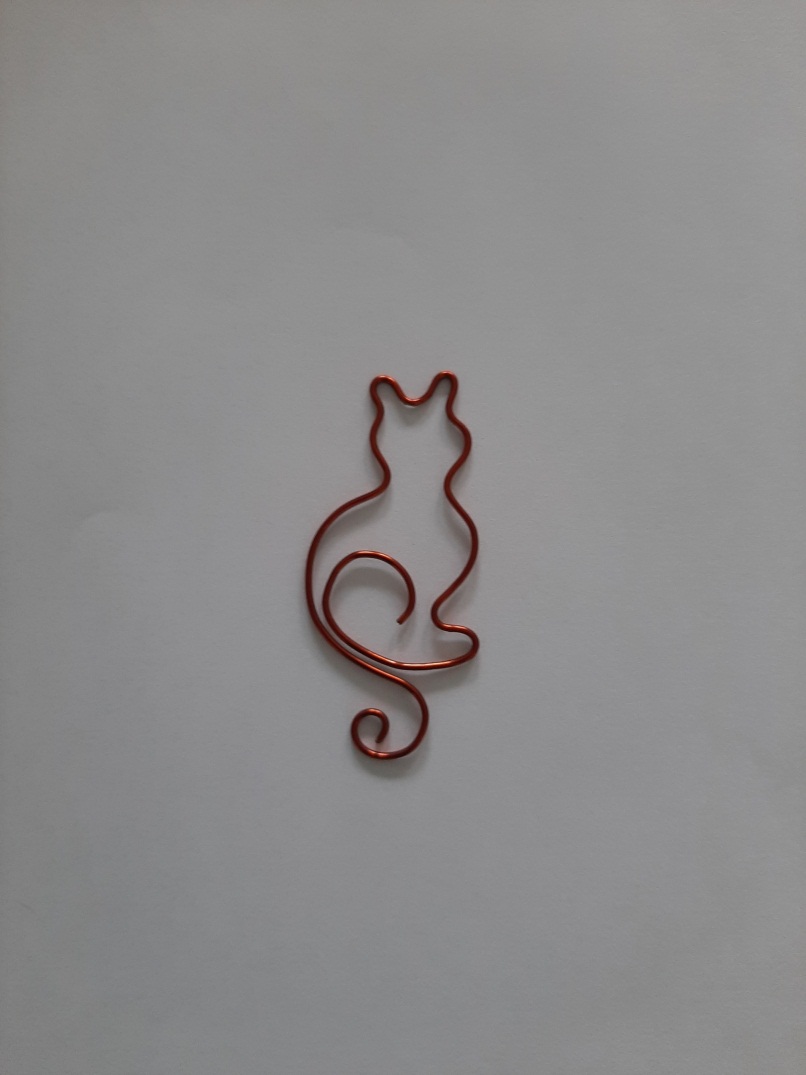
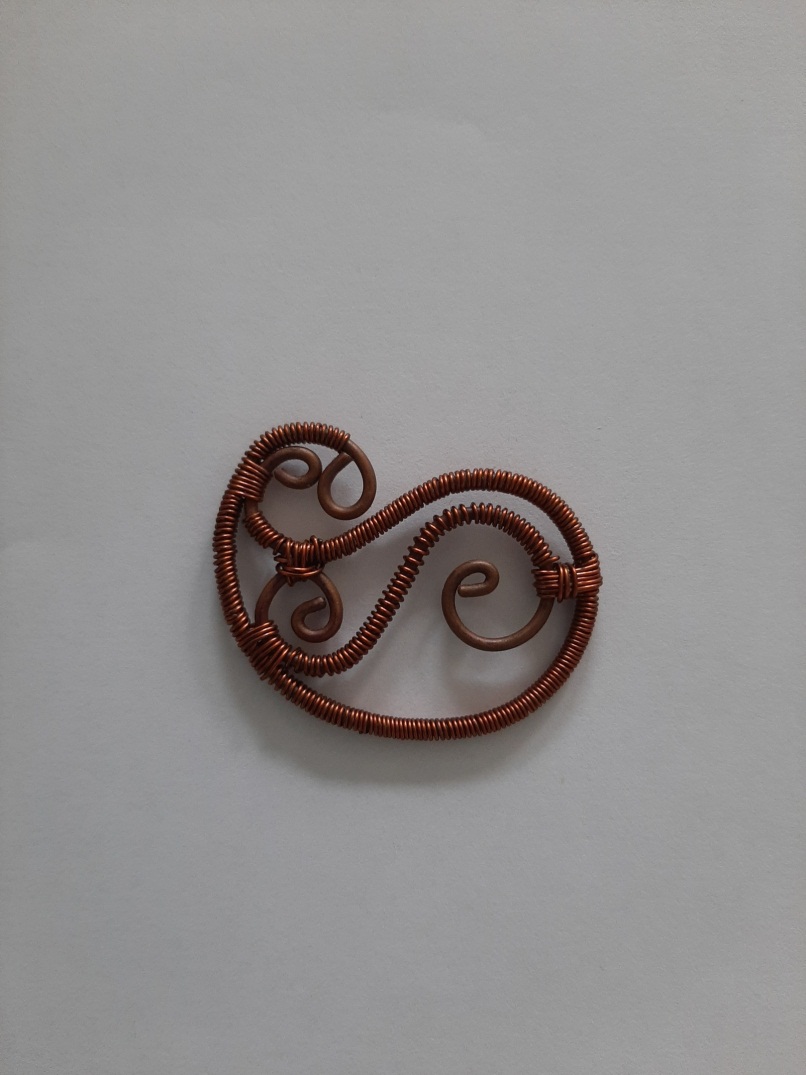
Within the framework of additional education, students not only master the necessary operations, methods of working with materials, but also acquire certain knowledge and skills in certain areas. During this period, interest and abilities are formed, students are provided with more complete information on professions, try their hand at certain professional areas, which later allows them to decide on their future profession (Zhang et al., 2020). This is just one of the significant aspects of the connection and continuity of various forms of education – additional, general, secondary vocational, higher.
Purpose of the Study
The purpose of the study is to present the conditions for the development of creative abilities in additional education and the impact of creative abilities on further professional development.
It is creativity that is the basis for active social and professional self-realization in society. It is the developed creative abilities that allow you to make non-standard decisions in various situations, and not to apply a template. This aspect is one of the priority directions at all levels of education – the development of a creative personality.
Research Methods
After receiving additional education in a certain field, and making a choice of profession, students enter vocational educational institutions and higher educational institutions with a certain background of professional knowledge, skills, and abilities. This significantly increases confidence in the correct choice of a future profession, facilitates the adaptation process and allows applying gained knowledge, skills and abilities in future professional activities. There are prerequisites for the application of innovations in the chosen professional activity, since the experience in this field is much broader. Students expand their competencies, master new ways of activity, while their peers master this area, get introduced to the profession, decide "whether this speciality suits them or does not", master the ways of action. This type of integration of education significantly reduces the percentage of expelled students due to disappointment in the chosen profession. Figure 3 shows the works of 2nd-year students who were trained in additional education organizations and gained primary skills in the field of artistic processing of materials and art field. Students used different methods of processing materials, integrating techniques, using different materials to create a product.
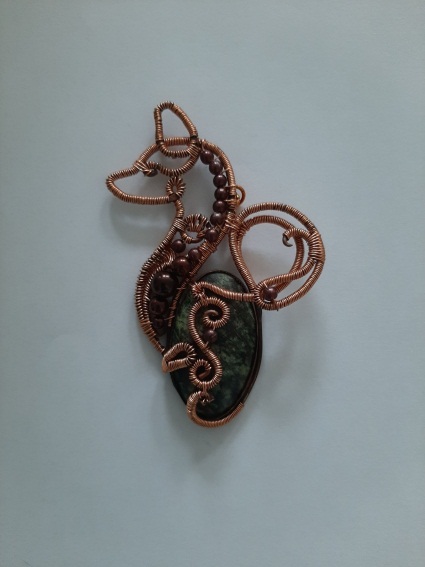
Higher education is a new stage of professional development, self-development and self-determination. Therefore, the higher school organizes the educational process in such a way as to form all the professional competencies of students (Ilyashenko et al., 2019). The process of mastering the methods of processing materials is expanding and becoming more complex, depending on the level of the institution, on the plans, as well as on the creative development, on the creative abilities of students. For this purpose it is advisable to conduct a creative exam to identify common professional concepts, ideas, and abilities. Future students demonstrate all the knowledge that they have acquired and mastered during their studies in institutions of additional education, since creative specialties do not involve the development of knowledge, skills and abilities within the framework of a comprehensive school. University education provides in-depth knowledge in the field of artistic processing of materials, more complex technologies are mastered, innovative theories in this area are studied, and advanced technologies are mastered.(Faizrakhmanova et al., 2018; Gavritskov et al., 2015). Figure 4 shows one of the works of the students.
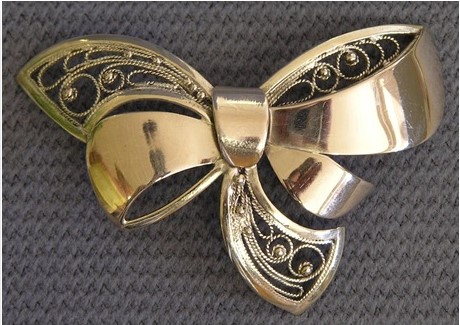
The project of the succession of different levels of programs of educational institutions in certain specific areas will allow achieving the following qualitative results: motivation; easy adaptation when entering universities; professional self-determination when reaching the age of getting a profession; interest in achieving results in the professional field.
Findings
Investigating and analyzing the level of creative works of applicants applying for the educational program 29.03.04 Artistic Materials Processing Technology, as well as the level of academic performance during the entire period of study at the university, satisfaction with the choice of profession, we made the following conclusions: out of 25 people in 2015, 13 students educated in institutions of additional education of artistic and decorative-applied orientation. No one out of these 13 students dropped out during the entire training period and the results of mastering the profession were significantly higher than those of their peers. Three out of twelve applicants without any prior art and decorative-applied training in institutions of additional education were expelled during the training period.
Fifteen out of twenty-seven students entered in 2016 studied in additional educational institutions. Two out of 15 students changed the speciality – 54.03.02 Decorative and Applied Art and Traditional Crafts, although they retained the artistic and decorative, and applied orientation in the professional sphere. At the same time, 4 out of 12 students who did not gain additional education experience were expelled. The reasons are different: dissatisfaction with the choice of profession, disappointment, low motivation.
Twelve out of twenty-six students entered in 2017 studied in additional educational institutions, and finish their studies at a fairly high level, except for 1 student. Three out of fourteen applicants without any prior art and decorative-applied training in institutions of additional education were expelled during the training period.
Figure 5 clearly shows a comparison of the number of students expelled from the university, who attempted to receive additional education and did not receive it.
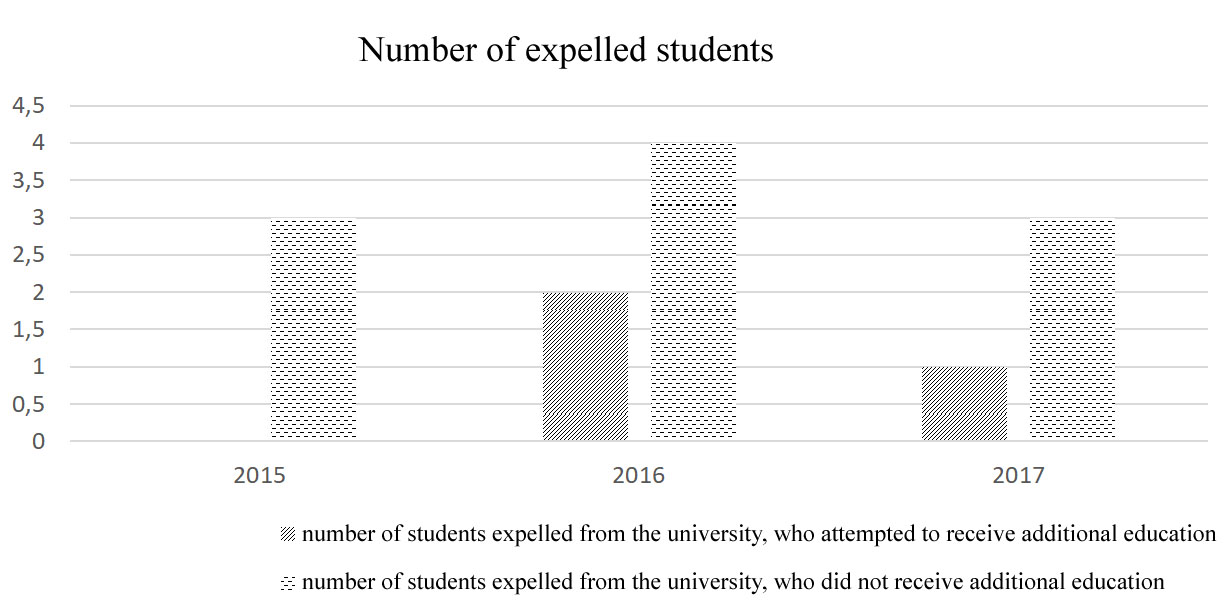
Conclusion
The data presented in Figure 5 clearly demonstrate the need for a succession of training in different directions of different educational institutions, which significantly expands the opportunities for efficient development in professional activities.
The basics of artistic skill and the formed creative abilities of artistic orientation contribute to further professional choice and purposeful entering and training in vocational and higher educational institutions.
We studied the level of creative work of students applying for the educational program 29.03.04 Artistic Materials Processing Technology, the level of academic performance during the entire period of study at the university, satisfaction with the choice of profession and the number of students expelled during the entire period of study. We also identified those who were expelled from the university, who have and do not have artistic and decorative-applied training gained at institutions of additional education.
The achievement of high-quality results of training at the university indicates systematic professional training, starting with institutions of additional education.
References
Borovinskaya, D. N. (2020). Measuring social demand for creative education. Vestnik Tomskogo Gosudarstvennogo Universiteta-Filosofiya-Sotsiologiya-Politologiya-Tomsk State University Journal Of Philosophy Sociology And Political Science, 58, 264–271.
Carneiro, M. A. B., & Noffs, N. D. (2020). Creativity: the necessary skill for professionals in this century. Revista Ibero-Americana De Estudos Em Educacao, 15, 2741–2755.
Churaev, V. I., & Sorokina, Ya. A. (2011). Formation of professional and creative competence of teachers of additional education of the younger generation. Results and prospects of the integrated education system in higher education of Russia: education-science-innovation activity: Collection of scientific works of the International Scientific and Practical Conference. Moscow State Industrial University. https://www.elibrary.ru/item.asp?id=23682758
Dolgusheva, N. A., & Mavrina, I. A. (2015). Additional education is as a means of creative development in school adolescents. Fundamental research, 2(9), 1961–1966. https://www.fundamental-research.ru/ru/article/view?id=37342
Faizrakhmanova, A., Averianova, T., Aitov, V., Kudinova, G., & Lebedeva, I. (2018). Coaching method in teaching history of visual arts to students. Journal of Social Studies Education Research, 9(2), 80–88.
Gavritskov, S., Kasatova, G., Lymareva, J., Gerasimova, A., & Shiller, O. (2015). The development of professional competences for future designers and technologists of artistic-industrial enterprises. Industrial Enterprises, 10(9), 2240–2243. http://docsdrive.com/pdfs/medwelljournals/sscience/2015/2240-2243.pdf
Ilyashenko, L. I., Vaganova, O. I., Smirnova, Z. V., Bystrova, N. V., & Kaznacheeva, S. N. (2019). Students' creative abilities development in higher educational institution. Amazonia Investiga, 8(22), 701–710.
Kislyakov, A. V., Rebikova, Yu. V., Shcherbakov, A. V., Kineva, E. L., & Lyamtseva, E. V. (2018). Methodological recommendations for the development of model additional general educational programs. CHIPPKRO Publ. https://ipk74.ru/upload/iblock/0e3/0e3c97700b38189ecaa8d386e0888b63.pdf
Nikkola, T., Reunamo, J., & Ruokonen, I. (2020). Children's creative thinking abilities and social orientations in Finnish early childhood education and care. Early Child Development And Care, SEP.
Pisnova, O. Yu. (2015). Implementation of a comprehensive program of additional technological education as means of pedagogical management of students project activities. Problems of pedagogy: proceedings of the VI International Scientific Conference (pp. 123–127). (Chita, January 2015). Young Scientist Publishing House. https://www.elibrary.ru/item.asp?id=23358591
Povolyaeva, M. N., & Popova, I. N. (2017). Additional educational programs of the new generation and evaluation of their effectiveness [Monograph]. LLC Novoe obrazovanie; Svoe izdatelstvo. https://rucont.ru/file.ashx?guid=2d5bb98f-386e-44fb-aaa3-a3c28cb642f6
Root-Bernstein, R. (2015). Arts and crafts as adjuncts to STEM education to foster creativity in gifted and talented students. Asia Pacific Education Review, 16(2), 203–212.
Salikhova, I. A. (2017). Architectural and artistic direction in the municipal system of pre-professional training of schoolchildren. Psychology, sociology and pedagogy, 5. http://psychology.snauka.ru/2017/05/8175
Simchera, M. I. (2019). Information technologies in the professional activity of teachers of additional education. Pedagogy today: problems and solutions: proceedings of the V International Scientific Conference (pp. 3–6). Svoe izdatelstvo. https://www.elibrary.ru/item.asp?id=38556567
Tran, K. N., Kudrowitz, B., & Koutstaal, W. (2020). Fostering creative minds: what predicts and boosts design competence in the classroom? International Journal Of Technology And Design Education, AUG.
Zhang, X. R., Cheng, L. F., Dai, D. Y., Tong, W. S., & Hu, W. P. (2020). Adolescents with different profiles of scientific versus artistic creativity: Similarity and difference in cognitive control. Thinking Skills And Creativity, 37, 100688.
Zhestkov, V. V. (2016). How and why to develop students' creative abilities in the process of extracurricular activities on technology. Young Scientist, 8.5(112.5), 19–22. https://www.elibrary.ru/item.asp?id=25967259
Zhidkov, A. A., Gordeev, K. S., Vorontsov, A. M., Dubrovin, N. A., & Gribina, G. A. (2020). Levels of additional professional education. Modern scientific research and innovation, 12. http://web.snauka.ru/issues/2020/12/93933
Copyright information

This work is licensed under a Creative Commons Attribution-NonCommercial-NoDerivatives 4.0 International License.
About this article
Publication Date
29 November 2021
Article Doi
eBook ISBN
978-1-80296-116-4
Publisher
European Publisher
Volume
117
Print ISBN (optional)
-
Edition Number
1st Edition
Pages
1-2730
Subjects
Cultural development, technological development, socio-political transformations, globalization
Cite this article as:
Kasatova, G. A., Averyanova, T. A., Kaukina, O. V., Natus, N. I., & Rezinkina, L. V. (2021). Development Of The Creative Abilities Of Students In Studying Artistic Metal Processing. In D. K. Bataev, S. A. Gapurov, A. D. Osmaev, V. K. Akaev, L. M. Idigova, M. R. Ovhadov, A. R. Salgiriev, & M. M. Betilmerzaeva (Eds.), Social and Cultural Transformations in The Context of Modern Globalism, vol 117. European Proceedings of Social and Behavioural Sciences (pp. 156-165). European Publisher. https://doi.org/10.15405/epsbs.2021.11.21

